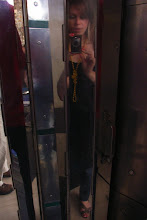My thoughts on the Cold War Modern exhibition at the V&A Museum: I must confess to having numerous gaping holes in my general history knowledge, the Cold War being one of them. After a slightly muddling start to this uber-exhibition, however, I found many of these gaps slotting into place as a deeper understanding of the era, and how this shaped interior and product design, fell into place. To surmise, without getting too history-lesson about it all, the highly competitive spirit between the East and West pushed designers to be more innovative, forward-thinking and resourceful than arguably at any other time during the 20th Century. Designers such as Alex and Peter Smithson, who created the House of the Future exhibition at the Ideal Home Exhibition in 1956, had many crafty, extreme design ideas even by today’s standard (see pic below for one of their room designs). The concept of a table that retracts electronically into the floor, whilst somewhat snigger-some an idea, is fundamentally a rather clever concept if adapted to a somewhat lower-tech version – what better idea for our 21st century cramped living conditions than a dining table that we can easily convert into a coffee table or even flatten down completely, to suit our immediate requirements?
The concept of a table that retracts electronically into the floor, whilst somewhat snigger-some an idea, is fundamentally a rather clever concept if adapted to a somewhat lower-tech version – what better idea for our 21st century cramped living conditions than a dining table that we can easily convert into a coffee table or even flatten down completely, to suit our immediate requirements?
As is often the case with design launched ahead of its time, many of the more avant-garde ideas never made it past the prototype stage, though many also went on to become enduring design classics, such as Eames’ plastic armchair, revered at the time for its use of polypropylene Of course, political issues came into play – I won’t even attempt to try and explain any of that, though perhaps the artwork of American Interior No.7 by Erro is a rather lovely, decorative way of highlighting the differences and conflicts between both parties.
 The exhibition also introduced me to the work of Jiri Kolar, Czech’s master collage artist and one of the founders of froissage (a form of collage using the lines of crumpled up paper to form drawings). As a massive fan of collage and decoupage, I particularly enjoyed his pieces reworking old maps into futuristic landscapes, which simultaneously manage to look old and comforting yet somewhat disconnected and alien. Having come across a map decoupage table by Bombus on the fantastic craft website All Things Original some months ago, this has inspired me further on ways to craft hack old maps.
The exhibition also introduced me to the work of Jiri Kolar, Czech’s master collage artist and one of the founders of froissage (a form of collage using the lines of crumpled up paper to form drawings). As a massive fan of collage and decoupage, I particularly enjoyed his pieces reworking old maps into futuristic landscapes, which simultaneously manage to look old and comforting yet somewhat disconnected and alien. Having come across a map decoupage table by Bombus on the fantastic craft website All Things Original some months ago, this has inspired me further on ways to craft hack old maps.
 One of the elements of the exhibition I found most interesting, however, was the way designers gradually came to consider the impact of the work they produced on the environment – far from being the ‘topical’ issue the press would have us believe, eco concerns were catalogued as far back as the 1960’s. To surmise the blurb, designers became concerned with “how to design new technology for the benefit of humanity without producing inhuman effect…how to imagine modern lives outside conditions set by the marketplace”. If only all designers/town planners/manufacturers would heed this manifesto – in the meantime, there’s always craft hacking to fulfil the brief!
One of the elements of the exhibition I found most interesting, however, was the way designers gradually came to consider the impact of the work they produced on the environment – far from being the ‘topical’ issue the press would have us believe, eco concerns were catalogued as far back as the 1960’s. To surmise the blurb, designers became concerned with “how to design new technology for the benefit of humanity without producing inhuman effect…how to imagine modern lives outside conditions set by the marketplace”. If only all designers/town planners/manufacturers would heed this manifesto – in the meantime, there’s always craft hacking to fulfil the brief!
…Perhaps now, more than ever, we need design to respond to the current state of the planet in as big and loud a way as any of the innovations to emerge from the Cold War movement.
Cold War Modern runs from 25th September 2008 – 11th January 2009



